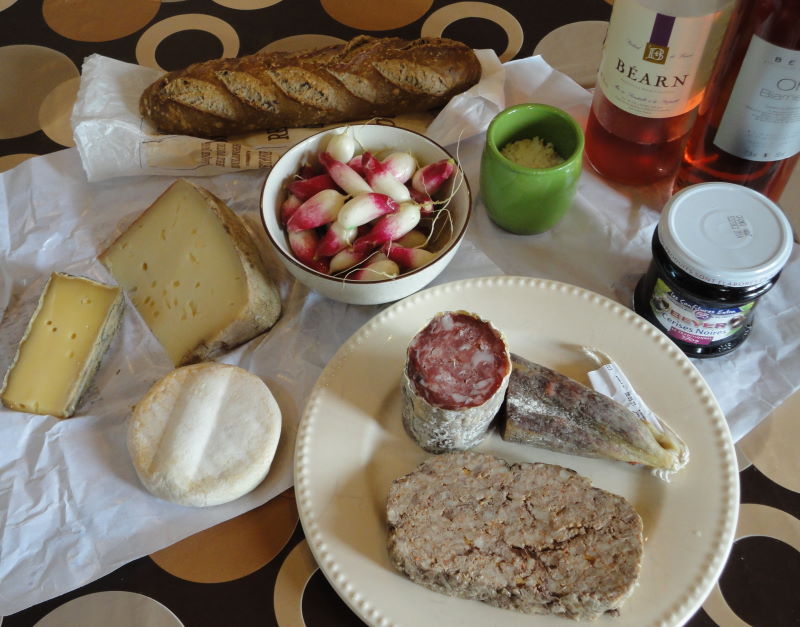
There are two market days every week in Orthez. Outdoors Saturday, in the parking lot of la Moutet, is the local farmer’s market that features only the bounty of the surrounding countryside, including offerings from farmers, meat producers and culinary artisans (and also a large selection of plants, vegetable starts, trees and flowers from the local nursery). This market is small, almost intimate with only 12-13 venders, and a truck or two, selling organic fruits and vegetables, a small amount of dairy products, including Oussau Iraty, a firm sheep’s milk cheese that is the most famous cheese of the region (it is traditionally eaten accompanied by sour cherry jam), chickens and eggs, and handmade fresh and cured sausages. These are supplemented by a stand selling oysters from Arcachon (2 hours away) and another selling roasted chickens, hams and pork loins, all vividly on display as they turn on a huge open flame rotisserie, their fat dripping into a long tray of tiny fingerling potatoes below.
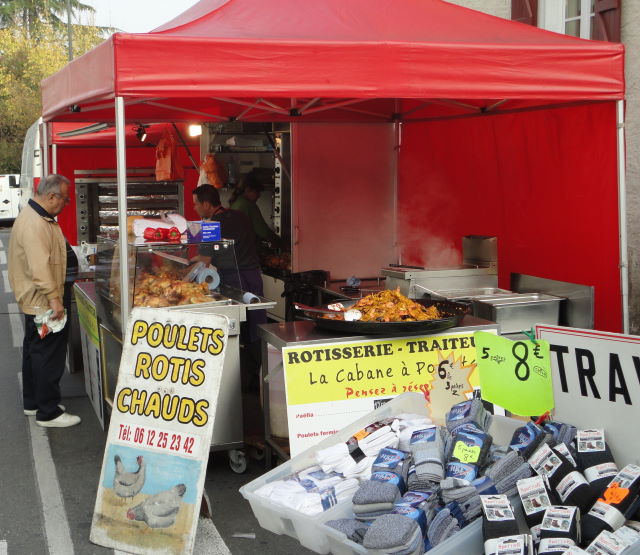
Tuesday is the big market day, and by comparison with the Saturday market, Tuesday’s is a sprawling bazaar that tumbles out of the covered market at Place de la Moutet and up the street to surround the Eglise Saint-Pierre. The food vendors are mostly concentrated inside la Moutet, a multipurpose facility built several decades ago when Orthez was the home of the Elan-Bearnais Basketball team, a local powerhouse that won the French Championship in 1986 before moving to Pau in 1991 for bigger fish to fry and a larger stadium. As a marketplace, la Moutet can’t match the charm of many markets on finds in the countryside, many of which date from the middle ages, but it fills the main requirement: it is big enough to hold a one of the largest markets in the area.
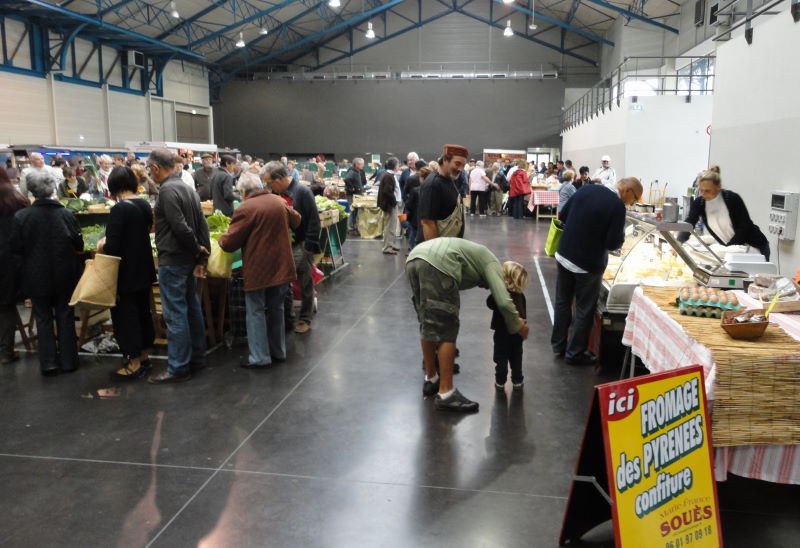
Here you find not only local farmers selling one or two items harvested that morning (I spoke with a young man operating a stand with a sign touting his association with Slow Foods Landes, and whose entire inventory consisted of a couple dozen tomatoes, a huge basket of arugula and ten or twelve lumpy green pumpkins. The arugula and tomatoes were excellent) but also several greengrocers selling produce from all over France, Europe and the world, with the point of origin of each item succinctly identified on the sign showing the price. There are several permanent shops, including a fishmonger, a butcher and a man who makes keys and repairs leather goods.
Beyond these stands, the selection explodes:
A mobile fishmonger from Saint-Jean de Luz, 45 minutes from Orthez and one of the most important Atlantic fishing ports in France, near the border with Spain. He featured squid, tuna, sardines, anchovies and his own house made salt cod, dried, as brandade or stuffed in piquillo peppers.
A basque butcher and charcutier, displaying a range of pork options, from fresh chops and shoulder, to fresh sausages (chipolatas, duck and piment d’Espelette, basque blood sausage) and aged sausages (chorizo, wild boar, duck), pates, confit of pork shoulder, ventreche (the French version of panchetta, salted and cured pork belly), much if it made from black footed pigs from the Pays Basques.
A stand selling locally produced foie gras, raw or preserved in bocals, and all the leftover parts of duck and goose including hearts, necks, feet, magret (the thick, steak like breast of fattened duck), rendered fat, gizzards and sausages stuffed in hog casing or in the skin of the ducks neck.
An artisan baker selling crisp baguettes, fat country loaves and Gateau Basque, the local specialty filled with pastry cream or cherry jam.”
A truck labeled “Provisions de Provence” selling dried fruits, nuts, olives, olive oils and spices (who by the way, warned us that in two weeks he would be going on vacation so we might want to stock up).
A coffee roaster who grinds to your specifications or selects a personal tea blend of herbs, flowers and roots depending our your needs.
One cheese monger selling only the local Oussau Iraty cheese, with specimens form just over a month old to more than 2 years and gnawed by cheese mites; another offering cheese from throughout France, cream, house-made yogurt and butter cut to order from a huge chunk and wrapped in red checked paper
In short, everything one needs to stock the larder in the Southwest of France.
Outside la Moutete, the market continues in a profusion of trucks and stands that surrounds the Eglise St.-Pierre like cars in a busy highway rest stop, filling every square food of available space. Here there is food for sale as well, but also clothing, leather goods, kitchen small wares, hats, scarves, cd’s and dvd’s, garden and shop tools, even a mobile Singer store offering sewing machines and on the spot repair service, as well as needles, thread, zippers and fabric.
I waited in line at a long, long trailer selling an astounding selection of shoes, while an elderly woman was assisted by the owner in her purchase of new calf-high boots for the coming winter (the first rain in weeks and a 12 degree drop in temperature is predicted for the next day). My goal is a purchase not that much different from hers: a pair of waterproof work shoes for garden work at our new house. When I finally had my turn, the Monsieur recommended a pair of shoe height boots by Chameau, made in Morocco. I liked them so much, I include a photo.
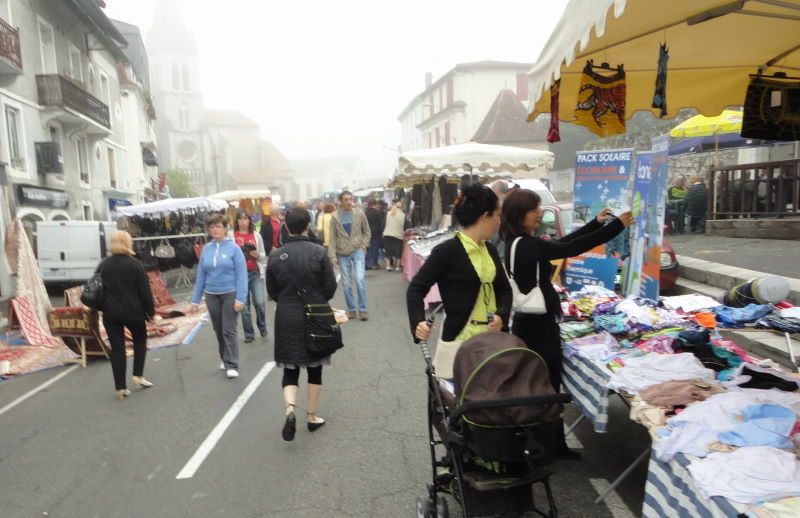
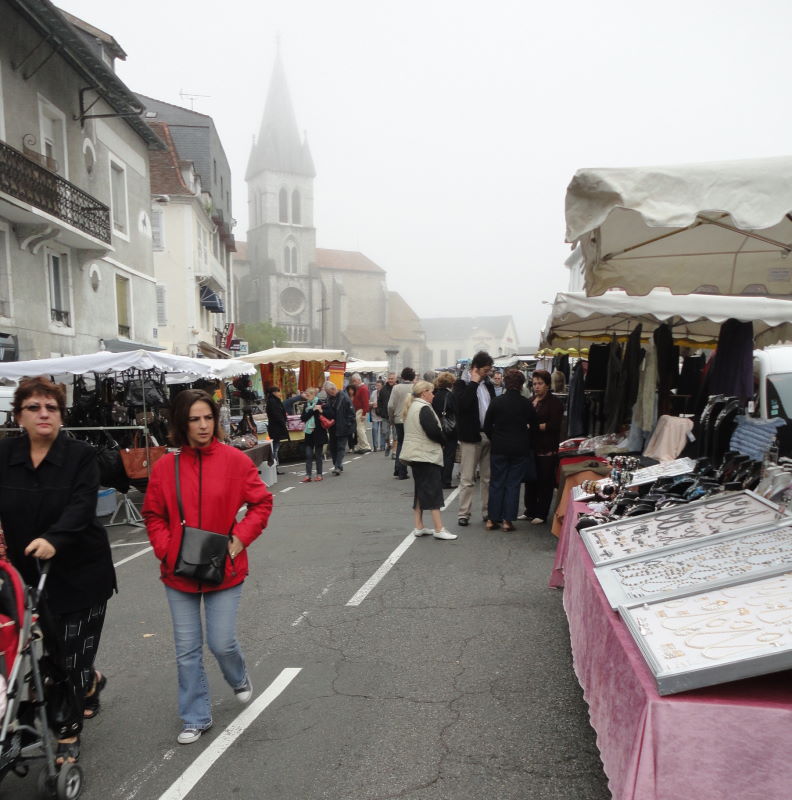
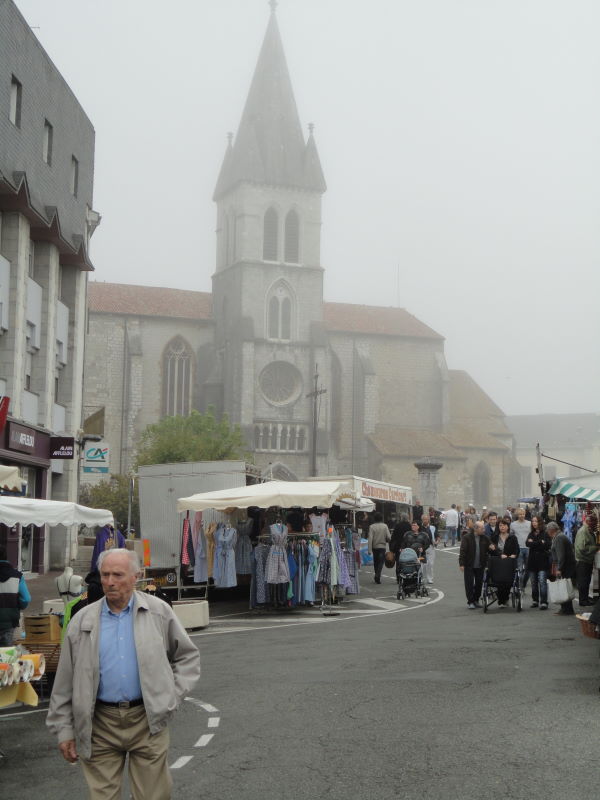
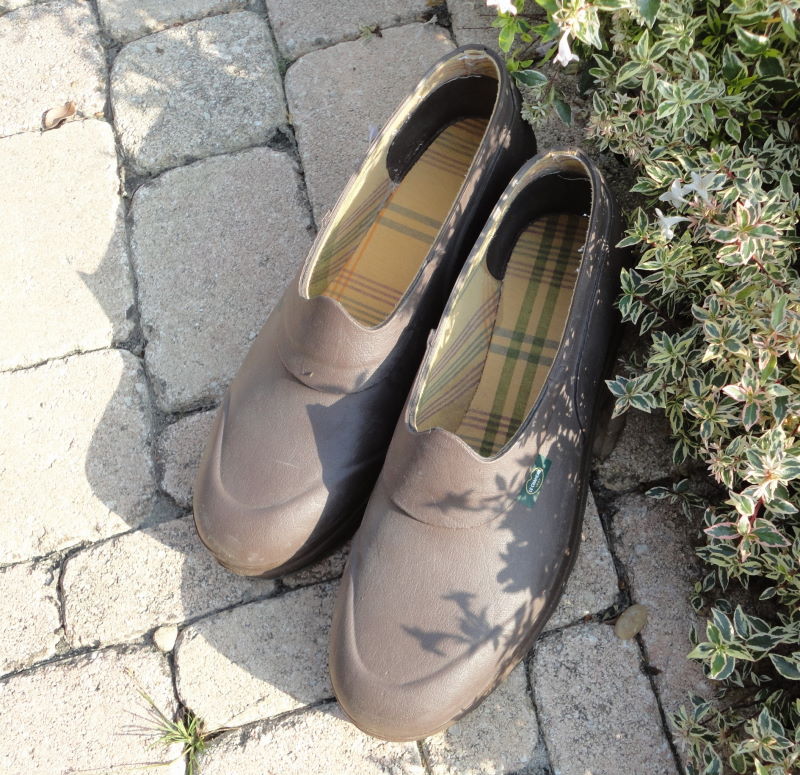
very fun to see these pictures. wish I were there with you shopping for treasures. Eat some of those goodies for us. good looking pastries. love you, Mom